The Anatomy of a Perfect E-commerce Product Page
Blog: MattsenKumar Blog
Competitor benchmarking, intellectual researches and intricate studies have yet again attributed quality customer experience as the key to success. Also, eminent industry players emerged as winners because they focused more on creating a quality customer experience and not on selling products.
With more and more customers looking for a quality experience, e-commerce players are under immense pressure to innovate. While the funded organizations are investing in benchmarking, customer journey mapping, and mystery shopping to identify and remove silos, the less privileged players are struggling.
We analyzed over 125 product pages from online stores like Amazon and Flipkart and we found the key to success for nascent marketplaces. While the anatomy of a perfect e-commerce product page includes hundreds of elements, we will be discussing the most impactful elements.
The Anatomy of a Perfect E-commerce Product Page
The ideal role of an e-commerce product page is to answer the multiple queries of customers like “will this shoe fit me?” “Are there more color variants of this product” and “what is the warranty period on this watch?”
Your product page must answer these and any other product-related questions the customer might have. Keeping shoppers at ease should be perhaps the first goal of all product pages but before you get to the page and put up all the product descriptions and return policy details, you will have to work on the route that will help customers find that product page.
Must Read:10 E-commerce Marketplace Management Tips for Greater Success
Here are all things your e-commerce product page must have
1. Clear and Concise Navigation
Product Discovery has an eminent role to play in increasing the CTR and controlling return rates. When people can find relevant product fasters, they will make quick decisions and online stores will benefit.
When categories are clearly defined, both users and search engines can find products quite easily. By investing time in creating well-defined categories, online stores can save customer’s time and garner better results.
Through clearly established navigation between two pages, e-commerce stores can help customers decide between two products easily and buy the one that suits them best. Well-defined on-site navigation makes it easier for customers to visit pages like:
- Home
- Shopping Cart
- Recently Viewed
- Similar Products
- Purchase History
This image from Flipkart.com is a perfect example of illustrated clear and concise navigation. One such clear categorization smoothens the search process for both customers as well as search engines.

2. A Pack of High Definition Images
“A picture is worth a thousand words” is one of the most repeated adages in the English language and the e-commerce industry proves it every time a customer buys a product online. High quality featured images are the key to better CTR and conversion on e-commerce stores.
By adding images of products taken from varied angles, online stores can help customers develop a better understanding of the product before ordering. Some of the additional benefits of featuring high-quality images include:
- Controlled return rates because a study reported 23% of all products are returned because they look different in real life
- Facilitates better decision making by helping customers identify tags or certifications printed on the product
- Increase likeability by illustrating the length and width of the product
International and legal guidelines: Following all the norms is the only way to creating a perfect and impactful catalog. International and legal guidelines are designed to protect underage users from exposure to illicit content on the web. Adhering by these norms does not affect the customer experience at all on the contrary they enhance the overall experience.
Photos from multiple angles: In retail stores, customers look at the product from all angles before making a purchase, since online shopping cannot provide a similar experience, marketplaces must make up for it by adding images from multiple angles. Such images make it easier for customers to decide whether they are looking at the right product or not.
White background: One thing common between all marketplaces is the white background of images. White background not only helps customers focus on the product but also entices the product and makes every minute detail visible.
Here’s another example from Flipkart that highlights the “driver angled” feature of an earphone. Such intricate demonstrations help customers identify the right product.
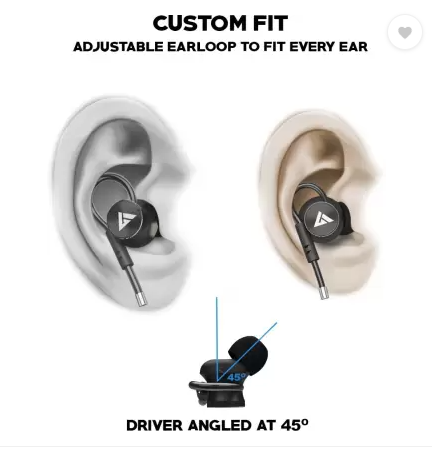
Also Read: 7 Proven Methods for Reducing Shopping Cart Abandonment for E-commerce Players
4. Title & Product Description
Optimize the product title: A product title is not only used to differentiate between two products but also to improve on-site search and search engine ranking. By optimizing product title, e-commerce stores can maintain a standard format on its platform. Following a specified pattern for all product, makes it easier for customers to identify the right product.
Some of the other benefits of optimizing title include:
- Easily rank in search engine results
- Simplifies site structure
- Facilitates easier product recognition
Unique content: When creating a product description, it is necessary to avoid plagiarism because it impacts search engine rankings. Industry experts recommend creating fresh and unique product descriptions because customers love interactive content. By creating content that is luring, interactive, and educative, e-commerce stores can offer a better understanding of the product.
Focus on Product Benefit: Apart from highlighting important attributes, focusing on product benefits in the description drives sales. All the benefits must be written in a way that inspires users to take action. Investing time in creating appealing product descriptions never goes waste because these are the only way of educating users about the product.
Simplified Layout: Highlighting product’s USPs is a standard practice in the e-commerce industry. For example, the commonly highlighted specifications of a watch include:
- The shape of the dial
- Depth of water it can handle
- Quartz or not
- Unisex or not
By highlighting all these attributes in a tabular form, stores can help customers to decide on a product with just one glance. These attributes are often used to rank products in search results.
Meta descriptions: Popular belief that search engines read the entire content before ranking them is not only wrong but deceptive. Search engines rely on subtle signals that content sends to rank it. The signals that search engines look for includes:
- Heading tags, H1, H2, H3, and H4.
- Meta Description
- Tags
- Categories & Sub-categories
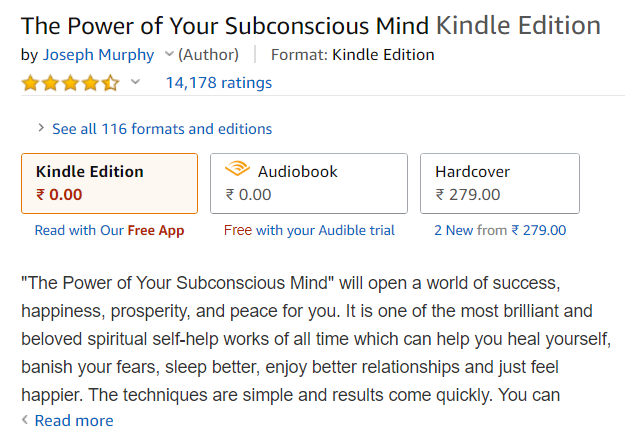
Must Read: 7 Conversion Improvement Tips for E-commerce Players
5. Call to Action Buttons
The complex checkout process and missing CTA buttons are the prime reasons for the increasing cart abandonment rate. 75% of carts are abandonment, out of which 45% of sales never happen. When creating a perfect catalog, e-commerce stores aim to offer a proper insight into the product but by failing to put a CTA on every page of the catalog, they let the excited customers go away. The efficient placement of CTA buttons will simplify the conversion process and drive more sales.
Call to Action buttons like “Add to Cart” and “Add to Wish List”, when added on varied pages, make it easier for customers to take action. Customers often spend time researching online for their desired products and when they find, they tend to add those into their wishlist or cart. By leveraging the visitor’s “fear of missing out”, marketplaces and e-commerce stores can use it in their favor.
Here are some of the additional benefit of adding CTAs on all pages:
- Improves the overall navigation of the website
- Controls cart abandonment rate
- Impacts customer experience positively
This illustration from Myntra.com showcases the efficient use of Call to Action. The two most common call to action buttons “Add to Bag” and “Wishlist” is highlighted and made quite accessible.
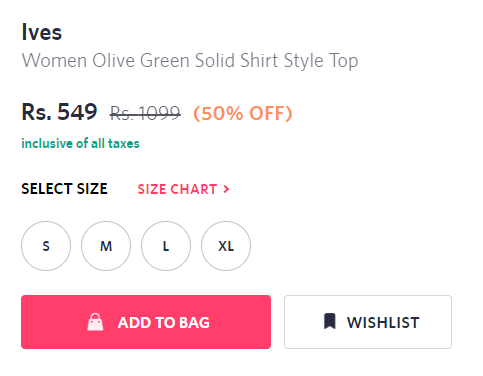
6. Cross-selling and Up-selling Features
The sole purpose of e-commerce marketplace management is to ensure that the platform is up, running, and generating sales. To increase conversions, big players like Amazon rely heavily on product recommendations. A recent study revealed, Amazon drives 29% of its sales from product recommendation, which is huge.
While replicating Amazon’s model of product recommendation is tough and expensive, cross-selling and up-selling through tabs like “Similar Products”, “Frequently Bought Together’ and “Other Customers Also Bought” is a viable option.
When it comes to cross-selling, tabs like “Similar Products” can prove to be a game-changer. By offering multiple versions of the product on the same page, you are helping customers make better decisions. Such cross-selling tabs make it easier for the customer to find products that suit their requirement, budget, and delivery needs.
Product recommendation is perhaps one of the most impactful practices in the e-commerce industry. Amazon relies on product recommendations for driving 29% of its sales. Cross-selling and up-selling, when leveraged properly, can help businesses improve the overall CLV and customer retention.
This image from Firstcry.com illustrates how e-commerce players can use cross-selling and up-selling tabs to increase their profits.

Must Read: E-commerce Product Recommendations: Best Practices & Tips
7. Return Policy
79% of customers shop from a site only if it offers free returns and 92% of shoppers are expected to come back if returns are easily processed. Having a robust return policy that allows customers to buy with peace of mind is important.
Amazon has spoiled people with choices and now every online store is expected to offer a similar experience. Using return policy to sell products is a great marketing strategy; it helps people gain confidence that their money is safe.
Putting your return policy details on the following pages can help:
- On the product page where users can see it clearly
- On the cart along with the final price
- In the My Order segment, it stops people from canceling the product
This image illustrates how Amazon keeps its return policy transparent. Highlighting return policy allows customers to feel safeguarded from any kind of fraud.
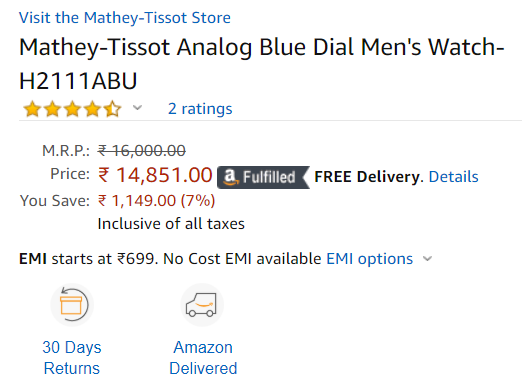
Additional Features that Will Help Customers Make Informed Decision includes
1. Check Delivery Date Widget
While the liberty to shop from anywhere and anytime is the reason people shop online, it is the fast delivery that makes people coming back again and again. Adding a widget that helps people check the estimated delivery date before placing an order can have immense benefits like:
- People will order product when it is getting delivered as per expectation leading to lesser return due to late delivery
- Helps people plan better adding to the overall customer experience
- Turns regular customers into promoters by ensuring timely delivery
Here’s an example from Caratlane, where this delivery date widget is placed right next to the product catalog. Users on a tight schedule will rely heavily on this feature to check if they can get it delivered at the right time or not.
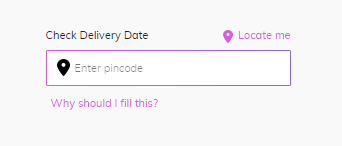
Also Read: E-commerce Fraud Prevention- 6 Common Types & Necessary Precautions
2. Step by Step Notification through Multiple Communication Channel
A huge percentage of people who shop online are eager to receive their package at the earliest. Such people often want e-commerce stores to keep them informed about their package’s movement. Notification on every step is a common practice and people love it too.
Adding a feature that allows people to receive notification about the package on WhatsApp, or Messenger is a great way of incorporating omnichannel expertise. It allows customers to track their packages without opening the e-commerce application.
Here’s how Caratlane has added a widget just close to the catalog. The feature is quite visible and likely to attract eyeballs.

Here’s another example from Lenskart, where it is ready to help customers place an order. Such intricate integration of customer support impacts the sales positively and also leads to better customer satisfaction.
![]()
Must Read: E-commerce Outsourcing Processes that Can Benefit
3. Measurement Chart
E-commerce players are trying several gimmicks to control the return rates; since the apparel segment contributes to maximum returns, it would be beneficial to add a Measurement Chart. Adding one such chart will allow customers to check the right size before ordering, which will positively impact the overall return rates.
Here’ how Alibaba.com has incorporated one such measurement chart. Such little but innovative steps elevate the entire customer experience, facilitates better decision making, and controls the return rates.
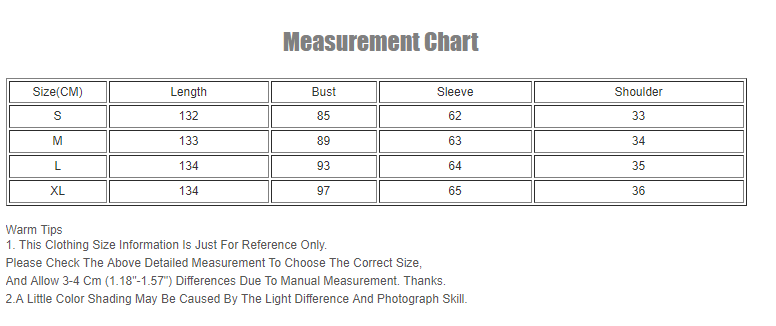
4. Leverage Social Proof
Popular online stores are now relying on user-generated content for marketing their product. Since customer reviews and photos have always facilitated other customers with better decision making capability, using it to educate customers is not a bad idea.
Multiple stores are highlighting reviews under section like “150+ Rated this product 5 Star” and “Here’s what others who bought it have to say”.
Skull Candy presents a similar example where it uses customer reviews to facilitate a better understanding of the product and also urges other customers to leave a review.
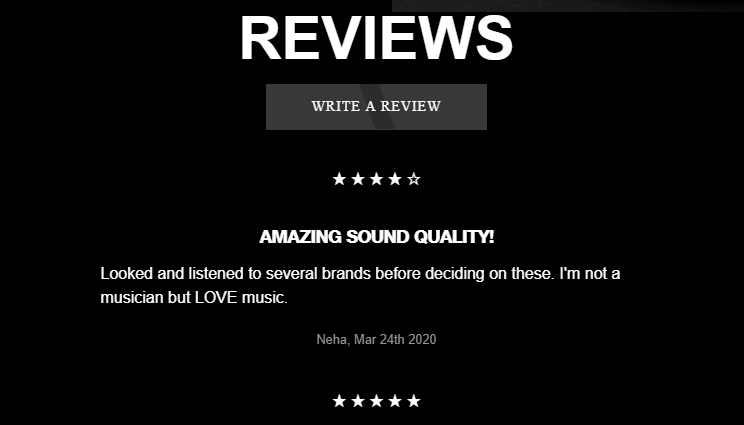
5. Highlight the Offers
When you have worked so hard in creating an engaging product catalog and added quality description then why not go a step ahead and highlight the offers? All your efforts will bear fruits when you start taking small steps that impact the customer experience.
Here’ an example from Myntra, which highlights the multiple offers that customers can avail on one single purchase. Such highlights make it easier for customers to club two or more products together to grab better deals and discounts.
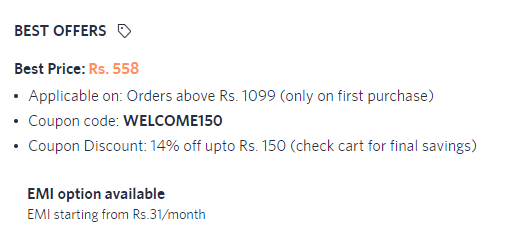
6. Nutritional Facts
With grocery now becoming an indispensable part of e-commerce stores, their nutritional facts must be highlighted. Using one such tab will help with
- Reduction in return rates because people will be able to order correct products
- Proper health planning
- Informed decision making
- Easier recognition of correct product from varied brands
Here’s a screenshot displaying how Freshdirect.com has leveraged the Nutritional Facts tab to help customers find the right product.
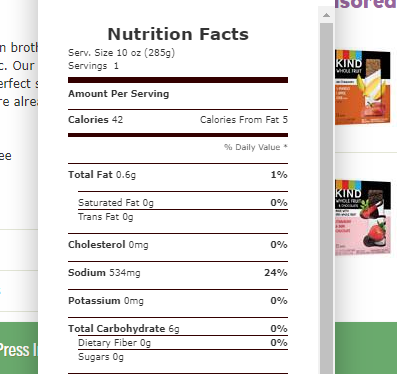
For organizations that do not deal with groceries but want to offer a better understanding of the product to customers, the FAQs tab seems like a good option. Ajio.com has worked on their FAQ section and tried to cover every possible question from customers. Creating such tabs elevate customer experience, improves on-site search functionality, and also simplifies the product discovery.
Also Read: 7 Pain Points Sellers Face on E-commerce Marketplaces & Solutions
7. Store Locator Option
In contemporary times, where people are always in a hurry, it makes to have a feature where people can order products from the comfort of their homes and pick it up on their way to work. Store locator option will make it easier for people to find if there’s any store nearby and then place orders.
Such little but really powerful implementations can prove to be game-changing in the long run. E-commerce stores just need to find the combination of features that work best for them and then bet big on it.
Decathlon used the Store Locator option well to help people plan their shopping.
Final Thoughts
From $2.3 billion in 2017 to $3.5 in 2019 and expected to cross $6 billion marks in 2023, the e-commerce industry has grown at a rate no one imagined. In the coming years, e-commerce is expected to handle 95%o of retail transactions. The simplified shopping experience, on-time delivery, and quality post-sale support are cited as the key metric on e-commerce success.
E-commerce players that focus on the customer and create experiences accordingly will win the race and establish themselves in the market. Everything starts with the product page hence try to incorporate everything mentioned in this article for greater success.
The post The Anatomy of a Perfect E-commerce Product Page appeared first on MattsenKumar.
Leave a Comment
You must be logged in to post a comment.









